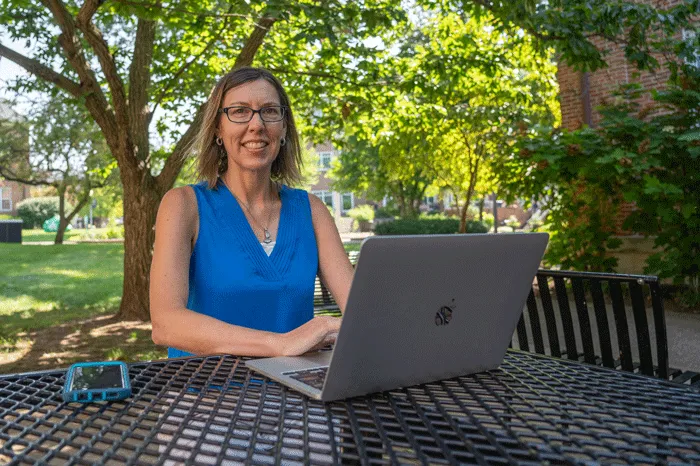
Zulma Marache, a young French immigrant living in New York City in the 1840s, was in the struggle of her young existence when the private details of her life became public.
“She was engaged, had sexual relations with her fiancé, became pregnant, he forced her to terminate the pregnancy and then refused to marry her,” says McCoy Professor of English Dr. Nicole Livengood. “There was a court case and she ended up testifying against her fiancé and the woman who provided the abortion. Because of this trial, The New York Herald published the trial information and then published her memoir, which was actually her legal statement that she made to the district attorney.”
Over the summer, Livengood was able to trace more about Marache’s genealogy and life story, thanks to a National Endowment for the Humanities Fellowship. Livengood first learned about the woman while doing unrelated research on the digital newspaper database, Chronicling America. The grant helped her spend time in Winsted, Connecticut, Manhattan, and upstate New York — all locations Marache’s family lived.
The NEH grant supported Livengood’s eight-week research and writing project. She applied for the competitive fellowship last fall and learned at the end of the spring semester that her topic was selected.
“It was a pretty rigorous application process,” Livengood says. “I had to write a narrative explaining what I planned to do and why it’s important and have my whole research schedule lined up.”
She will need to submit a report and finish the project, including a digital version of Marache’s memoir with footnotes and a critical introduction so people can access it for free.
“Zulma’s story was published in the newspaper and so I’m really working to figure out what her life was like before and after she appeared in the newspaper because that’s really the only way she’s known otherwise right now.”
The first-person account was written in French, translated in English, and took up a full page in the newspaper, which also stood out to Livengood when she accidentally happened upon it during a scan of the digital database.
As a teacher, Livengood tries to incorporate primary source research into her classroom, because working with newspapers, census records and historical museums, and finding primary-source documentation awakens students to research and critical thinking in a way that reading about others, or a lecture doesn’t. She now enjoying this approach with her own research and experiencing its challenges.
“Also, a lot of it for me has been a learning curve,” Livengood says. “I’m a literature scholar and so certainly I’m approaching this as a memoir in literature, but I’m also thinking about it as ‘how do I find out how she lived?’ So, I’m finding myself asking questions and solving problems in new ways, which speaks to that life-long learning the liberal arts prepares you for.”